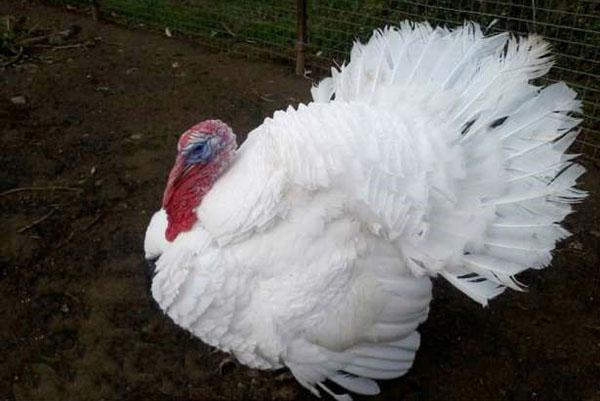Features of keeping turkeys of different breeds
 Turkeys are American birds. They were domesticated about 1000 years ago. They came to Europe, or rather, Spain, only in the 16th century after the fourth voyage of Christopher Columbus. The names "Turkey" and "Turkey" were transferred to the Russian language because of the Portuguese legend about Thanksgiving. On this day, the Indians fed the hungry sailors with delicious turkey meat.
Turkeys are American birds. They were domesticated about 1000 years ago. They came to Europe, or rather, Spain, only in the 16th century after the fourth voyage of Christopher Columbus. The names "Turkey" and "Turkey" were transferred to the Russian language because of the Portuguese legend about Thanksgiving. On this day, the Indians fed the hungry sailors with delicious turkey meat.
Today, those wild turkeys that were fed to Columbus's team are no longer hunted, since they are listed in the Red Book. Instead, bred turkey breeds are grown on the farms of America, England and Europe. There are about two hundred such breeds. Let's consider some of them.
Breed North Caucasian bronze
The North Caucasian bronze turkey breed has an elongated body, a small, lowered and extended chest. These turkeys are very mobile. Thanks to their elongated legs, they are well adapted to finding food. These birds have increased immunity and tolerate drafts well, thanks to the dense bronze plumage. The live weight of the male is from 13 to 15 kg. The egg production of turkeys reaches 100 pieces per year.
Due to the fact that turkeys of this breed were specially bred for home keeping, they gain weight well on regular grain feed. Therefore, from the age of two months, turkey poults can be transferred to a mixture of maize, barley and wheat.
Poultry retained the principles of hierarchy, so only the leader of the flock has the right to mate with females. Males of this breed regularly fight for the place of the leader. Often, such battles end in death. Because of this, males are best kept in separate enclosures.
Breed White broad-breasted
Turkey breed White broad-breasted grow up to 25 kg of live weight. It is not recommended to release these birds into an open enclosure inhabited by other birds due to their bad temper. Young individuals unite in groups and start "wars" for territory with other birds. They get along especially badly with ducks. Therefore, these turkeys are most often kept in turkey pens. With this method of keeping, there should be 2 m per turkey2 area.
General guidelines for content
In the first two days, turkey poults must be drunk with vitamins. Also, be sure to keep your turkey house clean to prevent coccidiosis in juveniles. In order for turkeys to gain muscle mass faster, extend their daylight hours. For the first two days, small turkeys are kept under round-the-clock lighting. Then the daylight hours are reduced by half an hour every day. In the turkey house, a 14-hour daylight hours are maintained until the slaughter of turkeys.
Maintain a temperature of 20ABOUTC or higher. If the room is colder than the turkey poults, they may die, and the adults will gain weight more slowly.